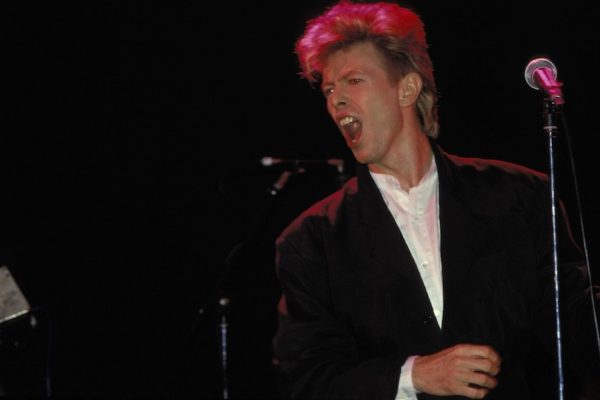It’s been five years since that Monday morning in 2016 and the news report that nearly knocked me out of bed. I’d been living with – and loving – the new David Bowie album all weekend, and now he was gone. Throughout the day, several friends took the time to ask if I was OK. In the moment, it was hard to process anything beyond the kindness the question represented. The year-long celebrity death march that started on January 10, 2016 had plenty of grim surprises to come, but none had quite the same immediacy as the first.
The shock wasn’t so much the fact of his death. It was the way the event almost completely flipped the script on his story. Not the myth of the masterfully executed musical goodbye that would envelop Blackstar amid its flirtation with cultural ubiquity but rather the excitement and promise its release initially embodied.
After waiting nearly a decade between 2003’s Reality and 2013’s The Next Day, here was another new Bowie album just three years later. We had him back. Blackstar could hardly have been more different than its predecessor, but it certainly wasn’t the first time one of his albums fit that description. We had him back. He probably wouldn’t tour again, but there was a chance. After all, we had him back. The future seemed boundless – as it had with so many of his previous records – because we had him back. It was a simple, sensible narrative.
In retrospect, that simplicity was the telltale hint that reality would have other ideas. Despite the well-intentioned but ultimately reductive obituaries trying to prove otherwise, Bowie’s work resists easy narratives. Shifting personas defined his career – even though he’d given up any identity beyond the consummate showman just a few years after retiring Ziggy Stardust. The Glass Spider Tour was just an empty spectacle whose failure prefaced over a decade of aimless musical wandering – during which he made several ambitious albums. The Next Day had been his best album since Scary Monsters – or was it the best since Let’s Dance? The list of certainties is a much quicker read than the accompanying list of ambiguities.
In a way, this is for the best. Letting go of the need for an overarching storyline makes the individual moments easier to hold dear. “Ain’t there one damn song that can make me break down and cry?” he sang on the title track from Young Americans. For anyone whose reply is yes, there’s almost certainly more than one.
Amid all the qualities associated with the late singer – inventiveness, style, charm, and so forth – passion sometimes gets overlooked. Though the “plastic soul” phase of Young Americans was just a small part of Bowie’s work, numerous songs before and after that period also tell the story of an artist whose outward cool by no means indicated a lack of emotional investment in his work. Examples range from his acknowledged classics to more obscure album cuts. In their own way, they paint a fuller picture of his artistry than a simple greatest hits collection could. “Sweet Thing,” “Word on a Wing,” “Absolute Beginners,” and “Everyone Says ‘Hi’” to name just a few, with Blackstar offering its own share of candidates to join their company.
For such a cohesive album, it’s striking how much little things stand out. In this respect, it calls to mind the Berlin trilogy, with the use of a jazz combo perhaps the ultimate invocation of Brian Eno’s “Oblique Strategies.” So many indelible turns of phrase, musically and lyrically.
I know something is very wrong; the post returns for prodigal songs
The clinic called; the x-ray’s fine
I’ve got scars that can’t be seen
It’s hard not to see Bowie’s illness reflected in these lyrics. Having said that, I never looked to his work for autobiographical detail when he was alive, and his death didn’t change that. The songs themselves are more than enough, especially that one damn song.
If I’ll never see the English evergreens I’m running to/It’s nothing to meet/It’s nothing to see
I lost track of how many times I pressed repeat on “Dollar Days” over that weekend. Bowie’s loveliest melody in years – possibly ever – filling my ears while walking on a chilly evening. I couldn’t break away. The sense of melancholy kept drawing me in even as it remained insistently elusive – at least until Monday came.
The morning news transformed the album I’d been loving all weekend into something haunting. The friends asking how I was feeling were precursors to the mass empathy that still binds so many of us – universal and profoundly personal all at once. It was always going to be this way. There was never going to be a “right” time for David Bowie to go. Whether he intended it or not, Blackstar just gave us more options to appreciate him when the moment came, expanding the parameters of what that one damn song might be. Ain’t that just like him?
—
An earlier version of this essay appeared in the anthology Me and the Starman, a collection raising money for cancer research.
-Don Klees
Photo: David Bowie, 1987 (Getty Images)




0 comments on “David Bowie and That One Damn Song (Five Years Later)”